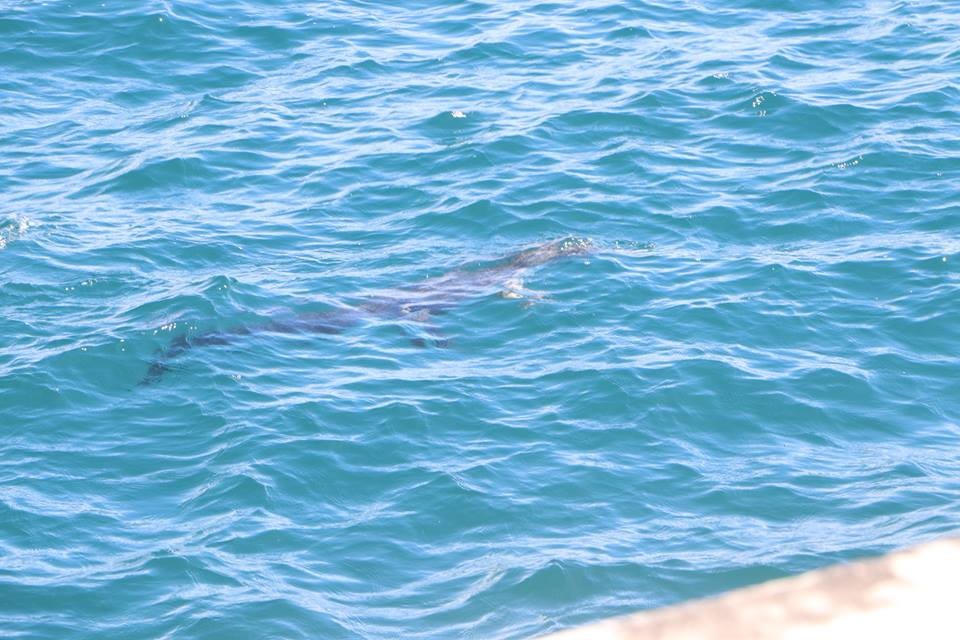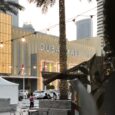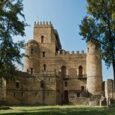There has been a number of posts on social media since June about saltwater crocodile sightings in Bislig, Surigao del Sur. Finally, it has been confirmed by the city government. Bislig Mayor Librado Navarro himself posted in his official Facebook account a public announcement:
“This week the Social Media made an initiative to announce with pictures the alleged presence of salt crocodile at the vicinity of Bislig Bay, specifically Pier 1 of formerly PICOP Sea Port. I already ordered the Coast Guard, PNP, 75th IB, City Agriculture Office and all the Barangay Captains of the Coastal Barangays to investigate and verify the alleged presence of Salt Crocodile and make appropriate actions how to manage this good opportunity. NO CAUSE FOR ALARM. If this update is true, we must be happy because this is a great opportunity that our City Be Known to the World and be proud of because the presence of Salt Crocodile means our Ecology and Biodiversity is still very alive. My only advice to the people is to adopt precautionary measures specially the fishermen , residents in the coastal area and the people na mahilig mag beach to be vigilant. “PLEASE DO NOT HARM THE CROCODILE“
The local government’s official Facebook account (LGU Bislig) as well as other Bislig-related accounts have posted their own announcement with photos of the saltwater crocodile and video as well, click this link to watch: Saltwater Crocodile in Bislig Caught on Video

According to the photo caption on Bislig City’s Facebook Page, the crocodile was sighted (again) at Pier 1 on July 6, 2018. They also warn the public to “take extra precaution when entering the waters of Bislig City” and reiterated the call of the City Mayor not to harm the crocodile [Photo from LGU Bislig Facebook Account]
The Mindoro crocodile, also known as the Philippine freshwater crocodile, is listed as critically endangered in the International Union for Conservation of Nature (IUCN) Red List of Threatened Species. It is known to thrive in small lakes, rivers and marshes, particularly in the islands of Mindoro, Busuanga in northern Palawan, Masbate, Negros, Samar, Mindanao and in the Sulu archipelago. It is relatively small, no more than three meters long. Young Philippine freshwater crocodiles prey on shrimps, dragonflies, small fish, and snails. Adults feed on large fish, pigs, dogs, snakes, and water birds.
Saltwater crocodiles, despite its name, can also be found in freshwater areas such as rivers, lakes and marshlands. Like the Philippine crocodile, according to the DENR, the saltwater crocodile is also in danger of extinction in the country because of loss of habitat as well as the high demand for its skin. It is bigger than the Philippine crocodile, growing up to seven meters or 30 feet.
The one seen in Bislig as well as the famous Lolong are saltwater crocodiles. Lolong is the 21-foot-long crocodile captured in 2011 in Agusan del Sur, which prior to its death in 2013, was recognized by the Guinness World Records as the world’s largest crocodile in captivity. The stuffed remains of Lolong is now an attraction at the National Museum of National History.
Young saltwater crocodiles eat insects, amphibians, crustaceans and fish. Adults can potentially eat animals such as monkeys, pigs, birds, cattle, bats, and even sharks. They are territorial and are known to attack humans who enter their territory.
Make sure to tell your travel buddies about this!




